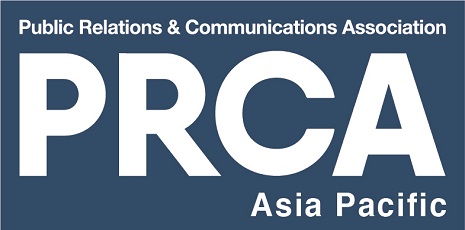The inside scoop on the Australian media landscape – a guide for early-career communications professionals
By the PRCA APAC NextGen Group – Lauren Garnet and Karen Burr
It’s no secret the Australian media landscape has undergone huge shifts over recent years. The rise of online news, the need for journalists to wear many hats (writer, investigator, editor, producer…) and the mass uptake of social media has meant that the career of a journalist has changed profoundly.
The way communications professionals need to engage with the media has changed too. A deep understanding of the media landscape, the challenges it is facing, opportunities that exist for organisations and brands, and how to build relationships with journalists is critical.
To gain the inside scoop, the PRCA APAC NextGen group spoke with three prominent Australian journalists who shared their insights; a radio producer, a former senior business journalist, and a columnist at a major Australian newspaper.
Journalism is a fast-paced job with relationships at the core
Breanna Edebohls is a Senior Producer at 3AW, a popular Melbourne talkback radio station, for the program Mornings with Tom Elliott. Breanna is a few years into her career as a producer.
When Breanna was first considering a job in journalism, she thought it would be “fast-paced and exciting” – which she has found to be absolutely true. She commented, “Every day is a thrilling mix of breaking news, last-minute turnarounds, and tight deadlines, and I wouldn’t have it any other way. It’s so rewarding and no show is ever the same.”
For Kate Racovolis, a former senior business journalist further on in her media journey, one of the elements of a journalism career she didn’t necessarily expect was the importance of building strong relationships, the focus on trust and leading with “credibility and authenticity”.
She elaborated, “Discovering these elements have been some of the most fulfilling and rewarding of my entire career. To connect with people, whether they are the director of an ASX-listed company or a small business owner, and to have them trust you with their story, is a privilege.”
One columnist at a major Australian newspaper who has spent several decades in financial journalism particularly valued the opportunity to work with ‘legends’ of the industry in the early days of his career, something he believes young journalists today don’t have the same access to.
“I used to sit back to back with one of the top business journalists in Australia, and I was working directly with some of the best business editors this country has ever seen. I was very lucky to have this sort of mentoring and it taught me an absolute heap – not only how to write but also how to manage contacts and build trust with people.”
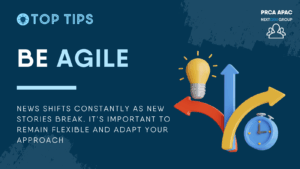
The rise of online and its impact on news and newsrooms
While it won’t be a surprise, all contributors to this article pointed to the rise in online journalism and social media as a source for news as some of the biggest changes they’ve witnessed in the industry to date.
The columnist commented, “The rise of online news really drives journalists’ daily routines – so for those working in communications, timely information and quick responses are absolutely key.”
Breanna from 3AW has some concern about social media as a news source, saying: “Younger generations are getting most of their information from their phones, not traditional media… the news they encounter on social media isn’t necessarily vetted or verified to a professional standard.”
Kate, the former senior business journalist, also shared that the need for journalists to wear “many hats” has become more pronounced as shrinking news desks have trimmed staff, including sub-editors, staff photographers and fact-checkers.
“The reason for this evolution is financial,” she explained. “Steep declines in advertising revenue has placed intense pressure on news organisations, which continually tighten budgets and reduce resources.
“Unfortunately, only a few companies have managed to evolve their business models to become less reliant on advertising revenue, instead focusing on events, subscription bundles and other commercial partnerships.”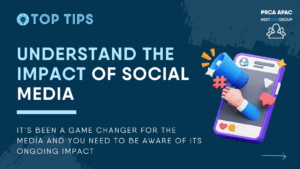
Human stories still resonate most with Australian audiences
One of the core pillars of good journalism is human interest – making sure that whoever is reading, listening or watching the story can relate to the subject and feel a connection to the individuals involved. All the journalists interviewed for this article agreed that this pillar remains firmly in place.
One journalist commented, “The most engaging stories came from a human truth, or an insight that was hiding from the view of the masses.”
With 3AW needing to cater to Victorian audiences’ specific local interests, Breanna shared: “Our audience is very concerned about the issues of crime and the cost of living in Victoria. When they listen to our news and interviews, they need to hear topics that relate directly to them. They’re always wondering, how does this relate to me?”.
The columnist whose writing focuses on leadership stories from the business world added: “Readers have a real appreciation for a genuine family or private business story, and I love writing about them. Leaders who have gone through hard times…readers connect with that human impact.”

The secret to building constructive relationships with journalists
Communications and public relations professionals can be hugely helpful for journalists looking for stories. The columnist commented, “I’m always amazed that I’m able to get most stories for my column from public relations contacts – I’ve had five PR pitches for my column within the past week, and 80% of the content I publish comes to me.”
But doing your research into the newspaper, column, radio or television program you’re looking to pitch to has never been more important.
“Because journalists are so busy, communications professionals should make sure they understand the journalist’s patch intricately,” Kate explained.
“This will help give the information the best chance of being picked up, and also helps the journalist to qualify its relevance quickly.”
Breanna from 3AW commented, “You should understand the kind of content and stories the show usually covers before sending that email. Having a grasp of the topics that the show’s primary demographic is interested in is essential.”
Having an understanding of the news cycle and being pragmatic about changes in scheduling also helps.
“Editorial schedules change all the time,” commented one interviewee.
“A more prominent, relevant or timely story breaks, and it changes the entire editorial program of the day/week. I’ve seen communications professionals become frustrated when stories aren’t run, or are delayed…they need to understand and respect that this is normal, and no editorial story is ever ‘guaranteed’. That is what paid advertising is for.”
But the same interviewee noted that these changes also bring opportunities: “In a newsroom, stories are always in flux, and communications professionals need to embrace this. In fact, because of it, there are always opportunities to add value to stories.”
Breanna also commented on the importance of pitching relevant and timely talent, who are available on the same day that you’re pitching the interview.
“As a producer, I look for talent who can come on the program at short notice. If I have to wait two days for approval, it simply won’t work out. The news cycle moves quickly, so if you can tell me why your talent is relevant to the big issues of the day, I’m more likely to get in touch.”
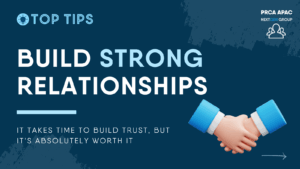
Emails over phone when pitching stories
Several of the journalists interviewed for this article noted they’re time poor and prefer email when receiving story pitches from communications professionals.
Breanna commented, “I prefer to communicate via email, as the nature of my work in live radio often limits my time to speak on the phone. A concise email with a clear subject line is the most effective way to get my attention.”
The columnist agreed, “I’m not interested in having coffee with people I don’t know – I’m very much focused on doing my work via email.”
Kate feels that it depends on the relationship you have cultivated with that journalist.
“A good relationship between a communications practitioner and a journalist/editor is a relationship that is based on mutual respect and trust… it means they can simply pick up the phone to quickly communicate or pitch a story, or vice versa if I need information or a response from an organisation quickly. Efficiency, transparency and honesty are essential.
“I’ve always been open to informal, exploratory meetings with communications professionals… but a tip is to think about how they can offer something unique or different.”
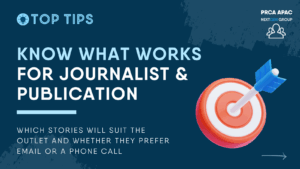
Build your media literacy – and don’t pitch the same story twice
For those starting off in their communications careers, building and improving your media literacy “as quickly as possible” is key, according to the former business journalist.
“Read news media closely, and widely,” she advised. “Focus on not only national mastheads, but industry trade media and other channels of influence. Know who the key voices and journalists are who are relevant to the sector you are working in.
“The only way to understand the media when you are starting your career is to engage with its content at every possible opportunity you have. Then, armed with the benefit of your contextual knowledge, you can start to understand their needs and ways of working – which also vary from journalist to journalist.”
The columnist interviewed for this article shared his frustrations when he receives a pitch that’s already been offered to another newspaper.
“It annoys me when I get pitched an article that has already run in another major Australian newspaper a month ago – exactly the same story. I always do a Google search now. Sometimes I’ll go back to the PR person to tell them the story has already appeared, and sometimes I don’t get a response, or they say it’s a different pitch.”
Ultimately, while the world of journalism in Australia is changing every day, it’s clear from these inside perspectives that the same principles still ring true: find the human angle, build relationships, and get to know the publications you’re pitching to.
And the PR industry has a key role to play. “I couldn’t dream of doing this column without the PR industry,” said one of the interviewees. “I’m very lucky that there are very good operators out there that know what I want.”
